Troy Brooks is frustrated. Since he began showing his work in 2010, the Toronto-based painter has received little support from the city’s art establishment. Despite commercial success, including a sold-out show at Pentimento Gallery in Leslieville, Brooks has had difficulty having his work shown or represented on the Toronto scene. No longer content to sit on the sidelines, this summer Brooks decided to seize the snub as an opportunity and set about assembling a group exhibition of Toronto artists under the banner of Pop Surrealism. The result, Parabolic: Toronto Exhibition of Pop Surrealism — on until August 28th — as part of the summer rental program at the Red Head Gallery—brings together work of varied artistic styles and media into a seductively strange dream world, equal parts whimsical and unnerving, hyper-realistic and fantastical.
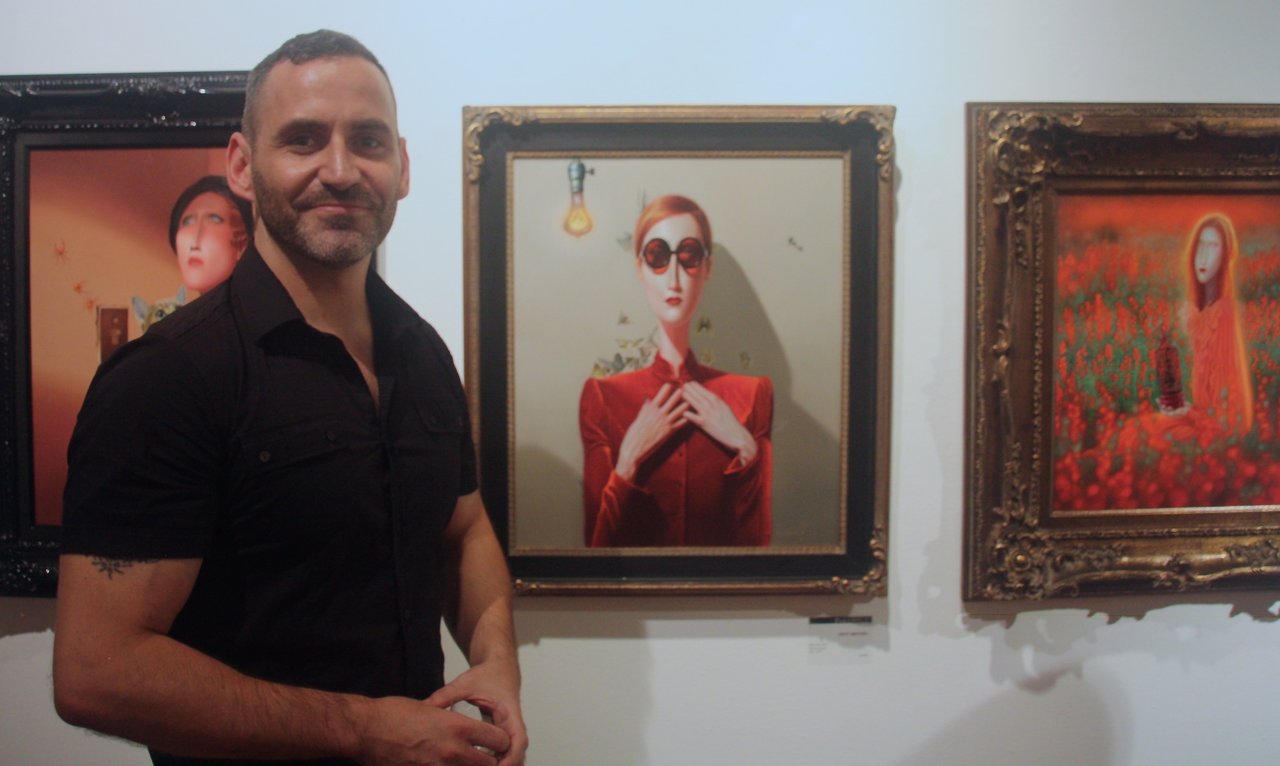 Artist and curator, Troy Brooks, stands with his work
Artist and curator, Troy Brooks, stands with his work
The show, like Pop Surrealism generally—occasionally referred to as lowbrow art—draws from a heterogeneous set of practices. These include illustration, comic books, graphic design, and fine art movements like photorealism, mannerism and, of course, surrealism. Though it tends most strongly toward painting, Parabolic and its broader genre also incorporate a variety of media that includes sculpture and photography. At the Red Head, the result of these disparate genres and media is a space that is playful and carnivalesque, with a Baroque flare for ornamentation. Viewers can expect to peer into technically masterful oil-painted dreamscapes by Kyle Stewart, Paul Saari, Troy Brooks, and Yang Cao and similarly imaginative photographs and drawings by Genevieve Blais and Stephanie MacLean. They will also also share the room with Christopher Hayes’ oversized matchbooks and Marjorie Campbell’s beautifully lifelike unicorn, felted sparrows, and six-foot fibre heron.
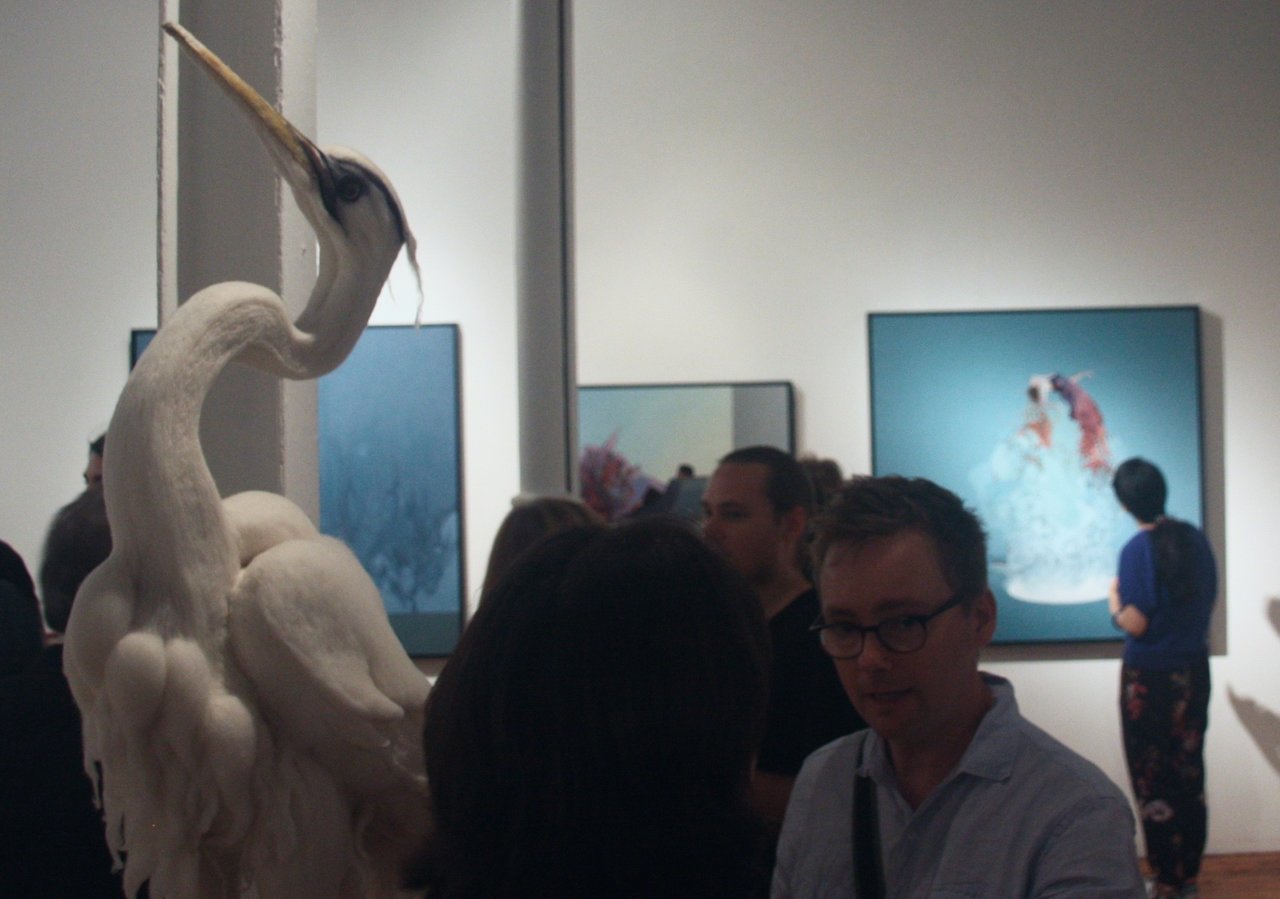 Guests at the Opening Reception mingle alongside Marjorie Campbell’s Heron, 2015, wool, wire, thread, rebar, epoxy, cement, 66.25″ x 23.5″
Guests at the Opening Reception mingle alongside Marjorie Campbell’s Heron, 2015, wool, wire, thread, rebar, epoxy, cement, 66.25″ x 23.5″
What unites these works is a turn toward figuration, a characteristic common to the genre. In Parabolic, this turn manifests as stylized human or animal figures in legible, if imaginative, spaces: Brooks’ exquisitely spectral femme fatales in unsettling interiors, for instance; or Kyle Stewart’s stunningly rendered discontented city dwellers, longing for a natural world that seeps into the urban environment. Even Paul Saari’s turbulent landscapes, a far remove from the real, bear reality’s recognizable traces: houses, grass, water, sky. These works are not abstract in the strict sense. Yet, they do tread somewhere between the abstract and the concrete. Indeed, as a whole, the show consistently balances razor sharp precision with something much more vague, fey and ethereal. Marjorie Campbell’s delicate felted wool sparrows perch inquisitively on cold cement hands, for example. Saari’s pastel houses stand out in near relief from the picture plane, yet also blend into the surrounding tempest. Yang Cao’s vividly naturalistic figure stands blinded by a low-flying cotton candy pink cloud. The effect is a sense that reality and fantasy are not distinct categories of experience. And while this often bears a sense of the sinister, it is also not without a sense of humour. Christopher Hayes’ cheeky ‘flat sculptures,’ bearing advertisements for the TTC and “Girls! Girls! Girls!” provide the prime example. The aesthetic result is a curious miasma of play, irony, fantasy and foreboding. Above all, the show, like its broader genre, does not take itself too seriously. This is surprisingly refreshing.
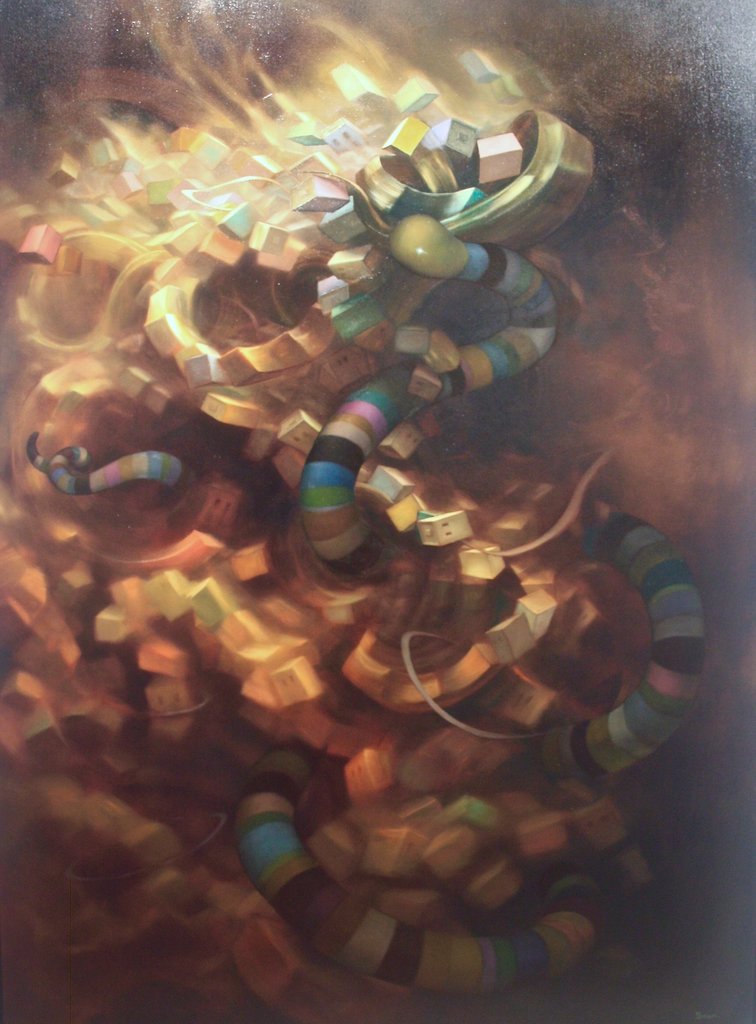 Paul Saari, Axis Mundi, oil on canvas, 63″ x 46″
Paul Saari, Axis Mundi, oil on canvas, 63″ x 46″
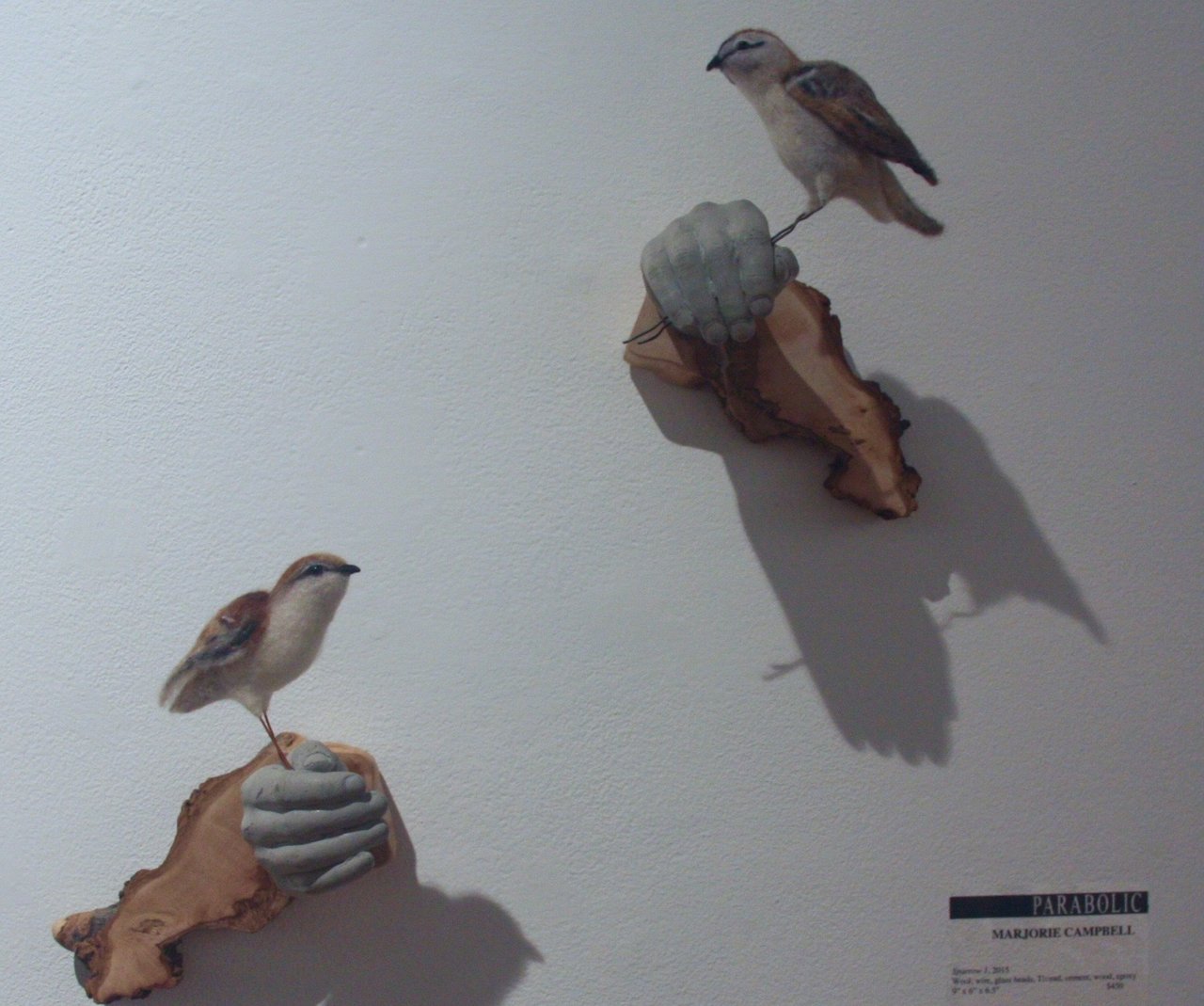 Marjorie Campbell, Sparrow I and Sparrow II, 2015, wool, wire, glass beads, thread, cement, wood, epoxy, 9″ x 6″ x 6.5″ (each)
Marjorie Campbell, Sparrow I and Sparrow II, 2015, wool, wire, glass beads, thread, cement, wood, epoxy, 9″ x 6″ x 6.5″ (each)
 Artist Yang Cao with his work Liminal XV, oil on canvas, 48″ x 48″
Artist Yang Cao with his work Liminal XV, oil on canvas, 48″ x 48″
 Artist Christopher Hayes and his work The Better Way, 2015, mixed media, 60″ x 32
Artist Christopher Hayes and his work The Better Way, 2015, mixed media, 60″ x 32
Like Toronto’s reception of Brooks’ work, however, the response to Pop Surrealism has been far from unanimously positive. Despite the commercial and critical acceptance of some of the genre’s most famous creators—artists like John Currin, Lisa Yuskavage, and Mark Ryden—and the runaway success of the lowbrow publication, Juxtapoz, the movement has spent much of its life defending itself from critics. The work is often viewed as conceptually unsophisticated, populist, and linked—through comic books, graphic design, and illustration—to the tawdry realm of commerce. What is more, much of it has been panned as blatantly misogynistic (John Currin has been particularly accused of this). And certainly, some works in Parabolic may be accused of these types of criticisms. Though the work avoids the brazenly sexualized representations of women created by artists like Currin, there are traces of the original Surrealist misogyny in the way fantasy tends to be grafted onto female, rather than male, figures. And, surely, some of the work in the show falls back on well-worn visual tropes of gothic horror and other genres. It is just such concerns that have art critics and scholars confused, attempting to reconcile technical mastery and savvy art historical referencing with bizarre, kitschy, even offensive subject matter, brazen use of colour, and a turn away from the abstract and conceptual work the artworld has come to love. Many critics simply do not know what to make of it. And Toronto is no different. As Brooks has commented, the Pop Surrealist community in the city has been largely underground. Most artists working within the genre do so in isolation and all but one artist in the show (Kyle Stewart) are unrepresented by commercial galleries.
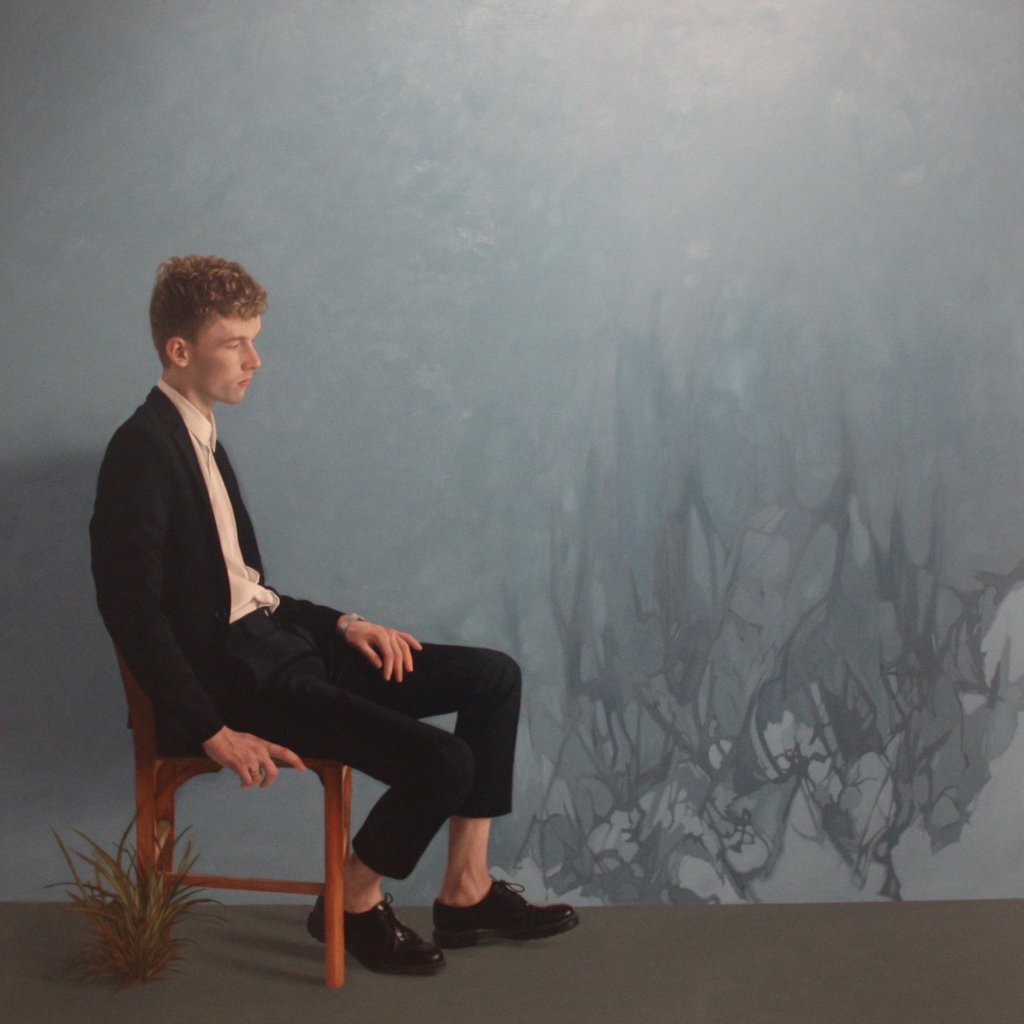 Kyle Stewart, Wallflower, oil on canvas, 48″ x 48″
Kyle Stewart, Wallflower, oil on canvas, 48″ x 48″
Yet, many of the qualities that make the work questionable to the art establishment are what the artists—and their patrons—like about the genre. As Brooks has stated, the work is accessible. It does not ask its viewers for complicated artspeak or graduate degrees in art history. And most of all, it engenders narrative. It achieves this partially through its figuration and depiction of space, but also largely through its inclusion of small, often disquieting details—a nail hanging out of an otherwise blank wall (Troy Brooks, “Still Life”), a painting-within-a-drawing hung sideways (Stephanie MacLean, “Twenty-First Year”), a few errant blades of grass in an otherwise sterile environment (Kyle Stewart, “Wallflower”). For Brooks, this narrative capacity is the crux of of the work; it is narrative that draws viewers in and incites immediate emotional responses. And it is this element that Brooks chose to emphasize through the exhibition title, Parabolic—taken from one of Brooks’ paintings—referring to the narrative arc.
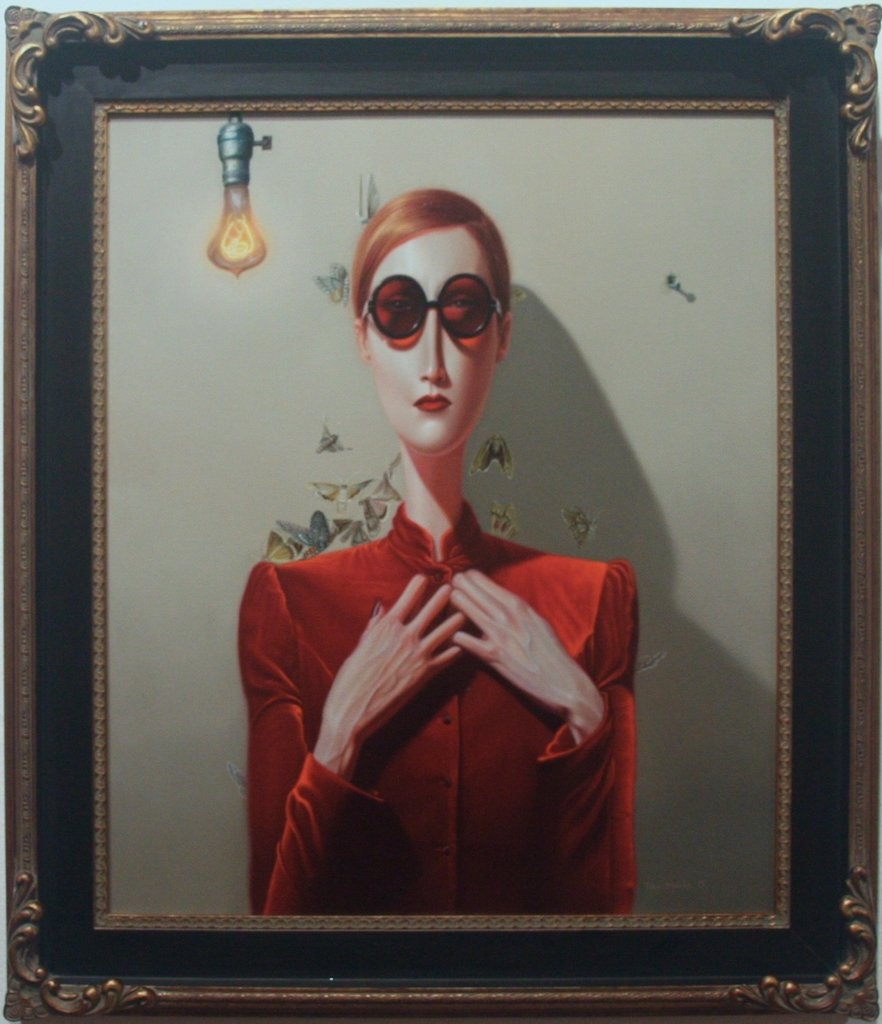 Troy Brooks, Still Life, 2014, oil on canvas, 20″ by 24″
Troy Brooks, Still Life, 2014, oil on canvas, 20″ by 24″
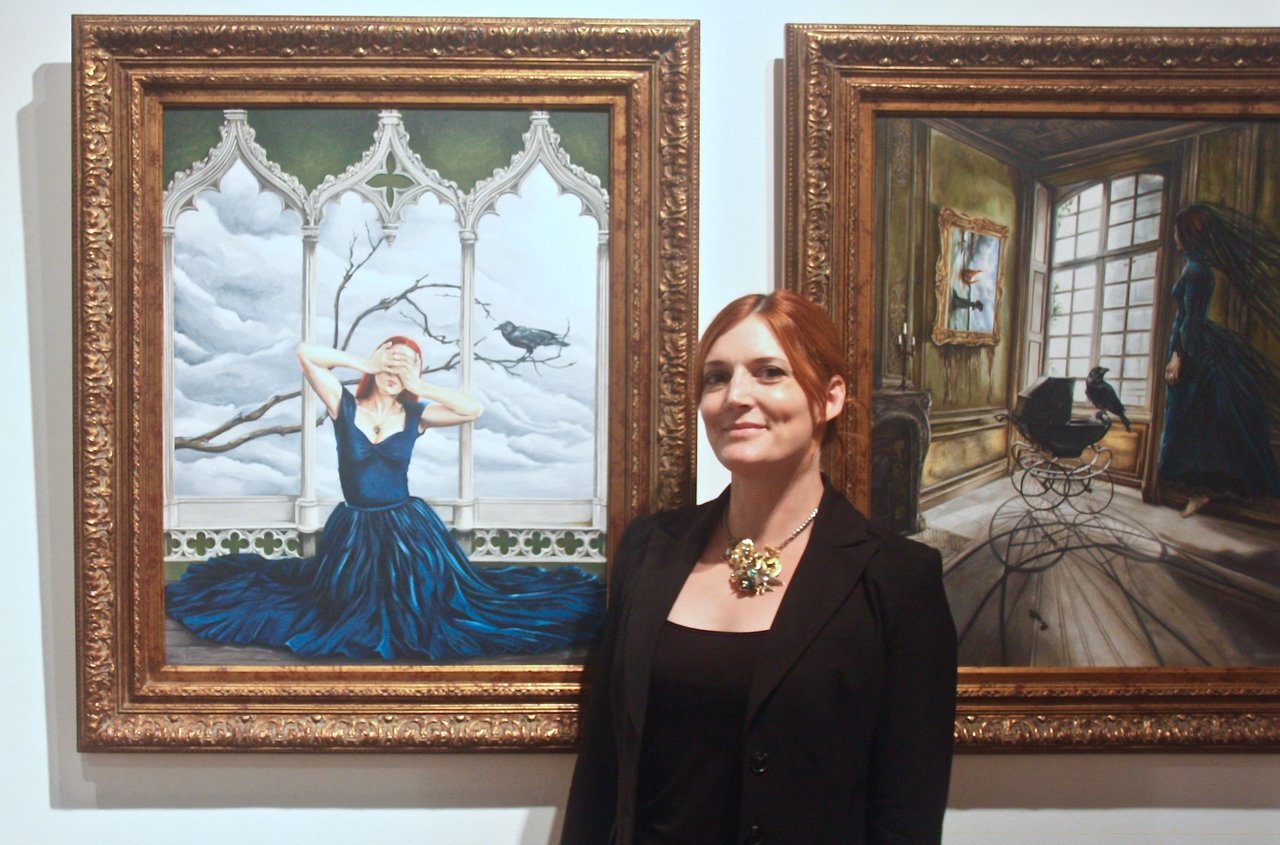 Artist Stephanie MacLean with her works, Silver Lining, 2015, coloured pencil on Stonehenge paper, 24″ x 30″ (left) and Twenty-First Year, 2015, coloured pencil on Stonehenge paper, 24″ x 30″ (right)
Artist Stephanie MacLean with her works, Silver Lining, 2015, coloured pencil on Stonehenge paper, 24″ x 30″ (left) and Twenty-First Year, 2015, coloured pencil on Stonehenge paper, 24″ x 30″ (right)
Ultimately, the jury may still be out on the critical role and importance of the Pop Surrealist/lowbrow genre(s) in the Toronto art world. It may be a while before this work makes it into city’s artistic mainstream. But it is here and it is making an impact: Brooks and other artists in Parabolic had already sold several pieces well before the end of the opening reception; meanwhile, in the broader artworld, Juxtapoz has a wider circulation than both ArtForum and Art in America and paintings by Ryden and Currin sell for six, even seven, figures. Artists and curators like Brooks are helping to push this work into the public discussion in Toronto—long after it has already been shown and discussed in cities like New York and Los Angeles. This pushing out is necessary so that a fair critical evaluation can take place. And Parabolic does this pushing out very successfully. Brooks has represented the multifarious, almost unwieldy genre well. In doing so, he has helped bring together a community of artists who may have otherwise failed to see their work recognized in the broader conversation. True, there are elements of the work that may be brash, lowbrow, overly kitschy, and veering ‘uncomfortably close’ to the commercial. But, to quote New Yorker art critic Peter Schjeldahl’s writing on John Currin, “to be frankly unlovable seems a prerequisite for meaning anything vital.” Unlovable as some may find it, there is a lot that is seductive about this work. About its unapologetic invitation to play, to forget art world posturing and simply look. I suggest you try it.
 Installation view with Christopher Hayes’ matchbooks and Marjorie Campbell’s Unicorn
Installation view with Christopher Hayes’ matchbooks and Marjorie Campbell’s Unicorn
Text and photo: Catherine MacArthur Falls
*Exhibition information: August 14 – 28, 2015, The Red Head Gallery, 401 Richmond Street West, Toronto. Gallery hours: Wed – Sat, 12 – 5 p.m.
